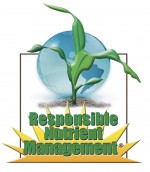 Several farmers have been honored for their efficient and effective use of applied fertilizer in their no-till systems. Considered Responsible Nutrient Management Practitioners, the no-tillers were honored Friday before 900 growers during the 22nd annual National No-Tillage Conference.
Several farmers have been honored for their efficient and effective use of applied fertilizer in their no-till systems. Considered Responsible Nutrient Management Practitioners, the no-tillers were honored Friday before 900 growers during the 22nd annual National No-Tillage Conference.
Roger Wenning of Greensburg, Ind.; Lonnie Bohn and Don Blaschko of B&B Partners in Gibbon, Neb.; and Dean Glenney of Dunnville, Ontario, each shared five practices they utilize on their farms in an effort to use only necessary amounts of applied fertilizer and make sure that it’s used by crops rather than lost to the environment.
Last year, all nominees for the 6th annual program answered more than 20 questions about their farming operations through an online application. Their responses were graded by a panel of fertility experts.
The highest scorers were awarded the honor, along with complimentary travel to the conference and lodging from Agro-Culture Liquid Fertilizers and conference registration from No-Till Farmer. Agro-Culture and No-Till Farmer are co-sponsors of the Responsible Nutrient Management Practitioners Program.
Following are snapshots of fertility practices utilized by these no-tillers:
- Bohn and Blaschko farm 1,600 acres of corn, soybeans and wheat. Soil testing is conducted every 4 years on 2.5-acre grids, but they test for nitrogen and nitrates annually. They split-apply nitrogen with 10 gallons of 32-0-0 and 10-34-0, along with nitrification inhibitors and phosphorus enhancers, at planting time. They also apply nitrogen with post-emergence herbicide applications and apply nutrients through center pivots after taking tissue samples.
- Glenney uses a concept he terms “fencerow farming” to create conditions in the row similar to soil found in undisturbed fencerows. No-tilling corn and soybeans in strips, Glenney likes to plant right back into the same row year after year. He applies all phosphorus and potassium at planting time 4 inches off the row, while half of his nitrogen is applied as 28% on each side of twin corn rows at planting time. When corn is 20 inches tall, he knifes in the remaining nitrogen in the row middles.
- Wenning variable-rate applies all fertilizer according to grid sampling conducted every 2 to 4 years. When strip-tilling corn, fertilizer is applied 2 to 4 inches deep near the row. He uses both liquid and dry fertilizer, with urea and AMS applied in a 2-by-2-inch band, and various mixes of liquid fertilizers applied in-furrow. Nitrogen is also applied at sidedress, and Wenning occasionally uses late-season foliar applications if tissue tests indicate a need.
“While there are some similarities in these farmers’ fertility programs, we see differences at times with the formulations of fertilizer they apply. What they have in common is they are very aware of what their fertility needs are and apply only what the crop needs to produce high yields,” says Dale Ruff, programs specialist for Agro-Culture Liquid Fertilizers, who introduced the winners during a special luncheon at the National No-Tillage Conference. “Their aim is to produce high yields with minimum impact on the environment.”
To get more details about these farmers’ fertility management programs and farming operations, visit the Responsible Nutrient Management Practitioners page on the No-Till Farmer Web site at www.ResponsibleNutrients.com.
Nominations are now being accepted at www.ResponsibleNutrients.com for the 7th class of Responsible Nutrient Management Practitioners to be honored at the 23rd annual National No-Tillage Conference in Cincinnati from Jan. 14-17, 2015. Contact Darrell Bruggink of No-Till Farmer at dbruggink@lesspub.com for more information on the program.






Post a comment
Report Abusive Comment